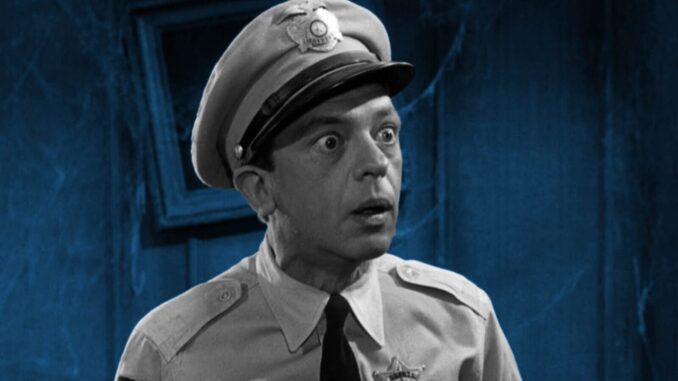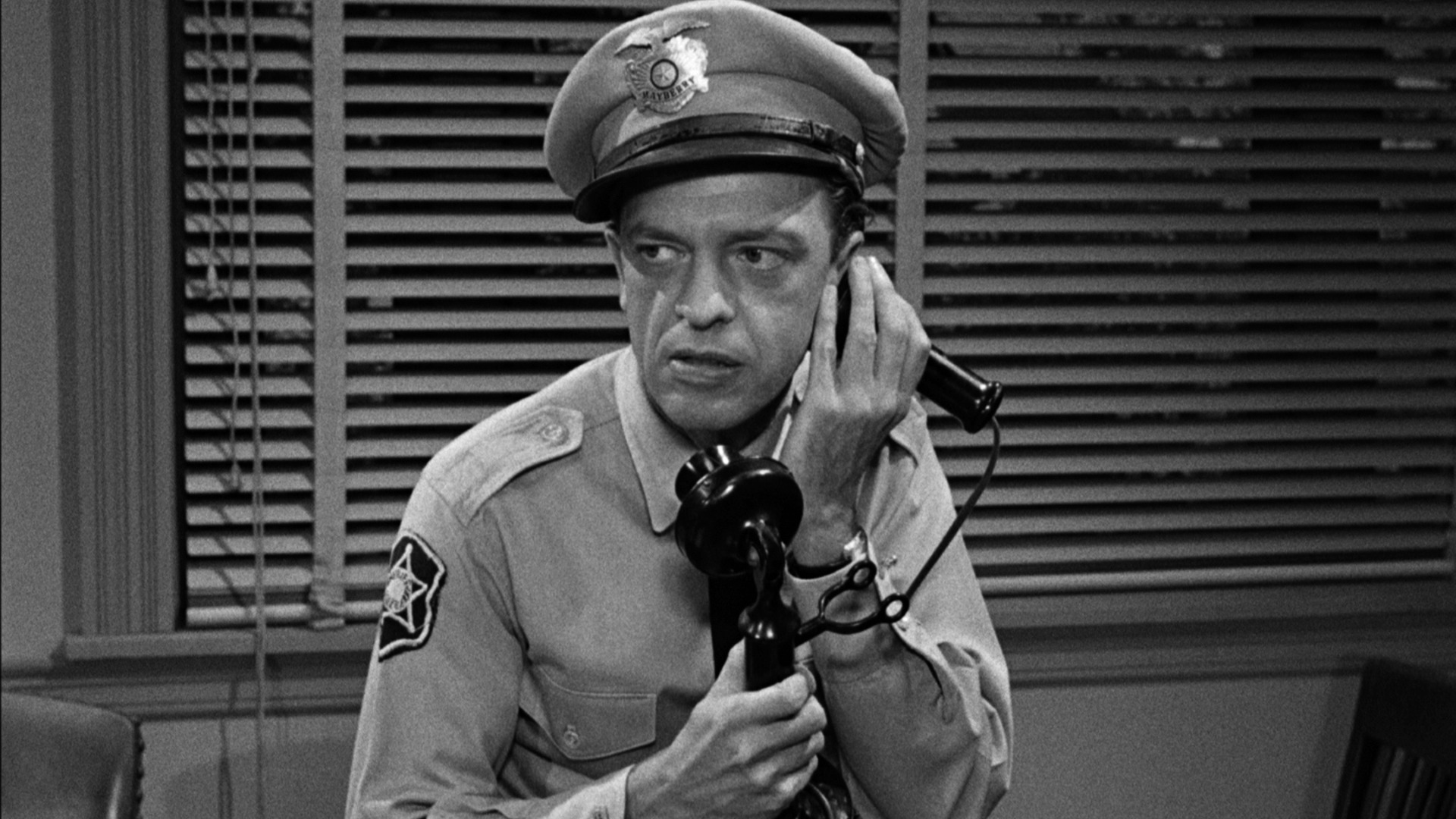
Introduction: A Rule Too Strange to Ignore
Ever wonder why Barney Fife — the famously jittery and over-the-top deputy on The Andy Griffith Show — never seemed to faint, even when the situation called for it? Turns out, it wasn’t an accident. There was actually a rule in place: Don Knotts wasn’t allowed to faint. Yes, you read that right. And the reason behind it is more fascinating than you’d expect.
Let’s dive into why fainting was off-limits in Mayberry, and what this rule says about the genius of classic television and the boundaries that shaped its stars.
The Genius of Don Knotts as Barney Fife
First, we have to appreciate the brilliance of Don Knotts, who portrayed Deputy Barney Fife with a perfect mix of nervous energy, awkward bravado, and physical comedy. He wasn’t just funny — he was the show’s comedic lifeline. His quivering voice, darting eyes, and frantic gestures made every scene electric.
But there was a line he wasn’t allowed to cross: Barney could bumble, stumble, and flail — but he could not faint.
Fainting: A Comedy Goldmine That Was Off Limits
In classic slapstick, fainting is a surefire laugh. Think of old cartoons or silent film comedies. Someone gets shocking news — boom, they drop like a sack of potatoes. But on The Andy Griffith Show, Barney Fife never got that laugh.
Why? Because the producers believed fainting would make him appear weak or incompetent — not just funny. And that distinction mattered.
Why Was Fainting a No-Go on the Show?
The showrunners didn’t just want Barney to be a clown. They wanted him to be sympathetic. He was a character who tried too hard, who got in his own way, but who always meant well. Letting him faint might turn him into a joke, rather than the lovable goof audiences rooted for.
In other words, they wanted to protect the dignity of the character — even in comedy.
The Real Story Behind the Director’s Orders
Reports suggest that the show’s creator and star, Andy Griffith, was involved in this decision. Andy and Don were close friends, and Andy had a deep respect for Don’s comedic instincts. But even with that bond, the creative team felt it was best to limit Barney’s slapstick.
The writers and directors thought fainting crossed a subtle line — from hilarious to humiliating.

Andy Griffith and Don Knotts: A Chemistry Like No Other
Let’s not forget, Andy and Barney balanced each other perfectly. Andy was the calm, collected sheriff. Barney was the excitable sidekick. If Barney had fainted, it might’ve exaggerated the contrast too far — making him seem too ridiculous.
By keeping him grounded (well, mostly), the show kept the comedic tension just right.
Barney’s Physical Comedy – With Limits
That doesn’t mean Don Knotts didn’t use his body. Quite the opposite — he was a master of physical comedy. Whether it was jerky movements, wild arm flailing, or awkward stumbles, he knew how to milk a laugh without ever fainting.
This limit, ironically, made him more inventive. He had to sell fear, surprise, or panic — without going limp on the floor.
Fainting in Classic TV: A Common Gag Elsewhere
The idea of banning fainting might seem strange, especially considering how common the gag was in other shows of the era. Lucy Ricardo fainted. So did countless sitcom characters. But The Andy Griffith Show was different.
It wasn’t just about laughs — it was about small-town charm, respect for character, and preserving that unique balance of heart and humor.
What the Showrunners Were Trying to Avoid
At its core, the rule was about tone. The Andy Griffith Show had a warmth and sincerity that set it apart. The humor wasn’t supposed to be cruel or mocking. By banning fainting, the creators avoided making Barney seem like a fool in the eyes of viewers.
They wanted you to laugh with him, not at him.
Did Fans Ever Notice the Missing Faint?
Here’s the fun part — most fans didn’t even notice. Because Don Knotts was so good, you never felt something was missing. You didn’t need the faint. His eyes, posture, voice — all told you exactly how overwhelmed he was.
In a way, his restraint made the comedy sharper.
Barney’s Workarounds: How Knotts Still Got Laughs
Don Knotts didn’t just accept the rule — he worked around it. He used exaggerated pauses, panicked pacing, and hilarious yelps to sell the moment. He didn’t need to drop to the floor; he could bring the house down with a single look.
That’s next-level comedy. That’s talent.
Behind-the-Scenes: Actors Share the Real Deal
In interviews, some cast members shared how the rule came about. They noted that Don never fought it — he understood the show’s tone. While he had full creative range in his movies, The Andy Griffith Show called for more nuance.
The producers didn’t want slapstick chaos. They wanted Mayberry to feel real.
Other Odd Rules on the Set of Mayberry
This wasn’t the only peculiar guideline. Did you know:
-
No laugh track was used in many episodes.
-
Characters rarely raised their voices.
-
Romance was kept subtle and never overtly physical.
All of this contributed to the wholesome, timeless vibe of the show. And fainting just didn’t fit.
How This Rule Affected Knotts’ Performance Style
Oddly enough, being told what not to do made Don Knotts better. Restrictions can fuel creativity, and that’s what happened here. He leaned more into his expressions, timing, and body language — and created one of the most memorable characters in sitcom history.
Barney Fife became iconic because of the limits, not despite them.
Legacy of Barney Fife: Loved Despite Limits
Today, Barney Fife is a pop culture legend. He’s quoted, meme’d, and remembered fondly. And most fans never knew he wasn’t allowed to faint. That’s the power of smart writing and exceptional acting.
He didn’t need a cheap gag — he had real depth, real charm, and real laughs.
The Enduring Charm of ‘The Andy Griffith Show’
Even decades later, The Andy Griffith Show still draws in audiences. Why? Because it understood its characters. It set boundaries not to stifle, but to protect the magic.
And the no-fainting rule? That’s just one quirky part of a bigger formula that kept Mayberry feeling genuine.
Conclusion: What We Can Learn from Mayberry’s Comic Restrictions
Sometimes, the most effective comedy comes from knowing when not to go for the easy laugh. Barney Fife not fainting may seem like a small detail, but it reflects the careful crafting of one of TV’s most beloved shows.
Don Knotts turned a restriction into a strength — proving that great comedy lives in the details, the timing, and the heart. That’s the kind of brilliance that keeps The Andy Griffith Show unforgettable.
FAQs
1. Why wasn’t Don Knotts allowed to faint as Barney Fife?
The producers believed fainting would make Barney look too foolish and weaken the character’s relatability. They wanted the humor to come from his earnestness, not humiliation.
2. Did Don Knotts ever try to include a fainting scene?
No, according to cast interviews, Knotts accepted the rule and found other ways to express surprise or panic through physical comedy and facial expressions.
3. Was fainting banned for all characters or just Barney?
The rule specifically applied to Barney Fife. Other characters simply didn’t have many moments that called for such dramatic reactions.
4. Did other sitcoms have similar comedy rules?
Yes, many classic sitcoms had tone restrictions. For example, Leave It to Beaver avoided slapstick, while I Love Lucy embraced it. Each show carefully shaped its humor style.
5. Has this rule impacted how other actors approach comedic roles?
Absolutely. It’s a reminder that less can be more, and that smart boundaries can actually sharpen a comedic performance rather than limit it.
Let me know if you’d like this article tailored for a blog post upload or turned into a downloadable PDF format!
